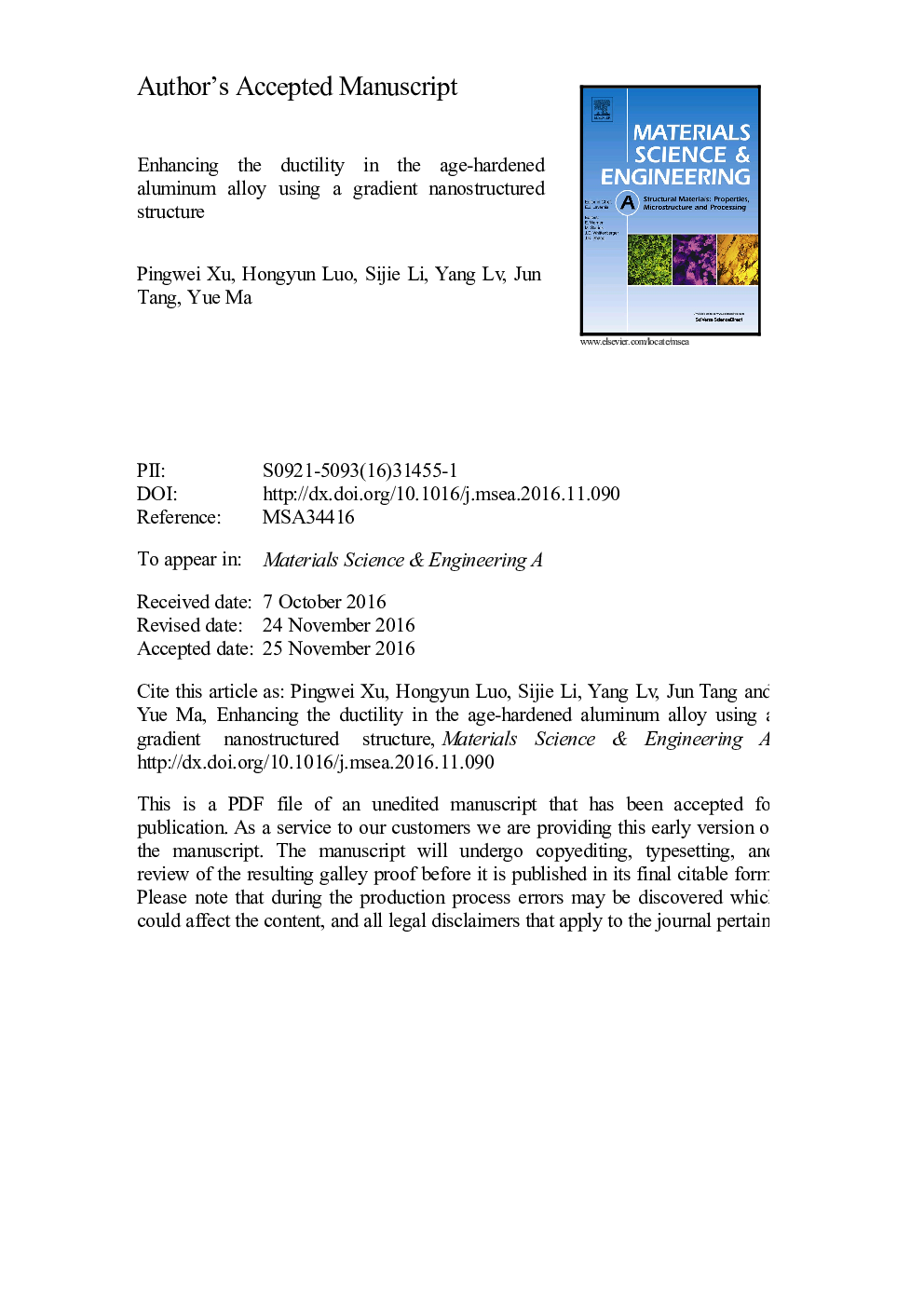| Article ID | Journal | Published Year | Pages | File Type |
|---|---|---|---|---|
| 5456449 | Materials Science and Engineering: A | 2017 | 36 Pages |
Abstract
A high ductility and extra strain hardening are achieved in the age-hardened Al alloy but without strength improvement via the introduction of a gradient nanostructured layer. The strain gradient and different residual stress between gradient layer and matrix are mainly responsible for the enhanced ductility, while the appearance of minority flaws (grain boundary precipitations) accounts for strength change. Compressive residual stress suppresses crack nucleation and propagation and cooperatively activates the partial dislocation mechanism in gradient layer. Combined with tensile residual stress from matrix, strain gradient is further increased during tensile testing. Besides, samples with the gradient layer exhibit significant thickness effect on the tensile properties, due to varying compressive residual stress occurring at flaws. Different contributions from strengthening mechanisms and flaws make the significant difference between pure metal and alloy with a gradient layer. This work provides new understanding of gradient materials, which is imperative to practical application for real complex materials.
Related Topics
Physical Sciences and Engineering
Materials Science
Materials Science (General)
Authors
Pingwei Xu, Hongyun Luo, Sijie Li, Yang Lv, Jun Tang, Yue Ma,
